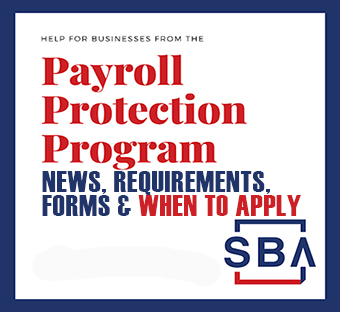Tax laws pertaining to the buying and selling of real estate have been outlined by the Taxation Code, also known as the R&TC. The section 18662 of the regulation states that all the residents, non-residents, and the non-business individuals are subjected to the payment of withholding tax, originating from the exchange or sale of real estate. However, there are certain rules prescribed in subdivision (e)(3) of R&TC’s section 18662 that exempt an individual from real estate withholding tax.
If you need help in filling out your Real Estate Tax Withholding Certificate please call us at 407-502-2400, or email us at [email protected]
What is Real Estate Withholding Tax?
Basically, real estate withholding tax is the prepayment of a franchise or an income tax which is payable by the sellers on the profit made from the sale of California real estate. In other words, it is an income tax on the sale of real estate. If the withholding amount is greater than the liability on the income tax, the difference is refunded when a tax return is filed at the end of the year. It should be noted that real estate withholding is not an additional form of tax that is due on the sale of property.
The real estate withholding tax became applicable on the sale of property in the state of California by both non-residents and residents after the 1st of January 2003. Earlier, this tax was only liable on non-residents. It was implemented by the legislation in its last session in 2002 to balance the budget of the state and it was estimated that about $285 million would be collected in additional revenue. The California Franchise Tax Board (FTB) is accountable for the collection of the withholding, specifically the department of the withholding services and the compliance section.
It is important to note down a few terms that are essential when it comes to real estate:
- The Buyer: It refers to the person who buys a real estate and is also called the transferee.
- The Seller: It is the person who sells their property and is the transferor.
- Real Estate Escrow Person (REEP): It refers to any title company, attorney, or escrow company that is responsible for closing the transaction, or any individual who receives and pays for the sale of property.
- Qualified Intermediary (QI): It refers to those bodies or entities that provide a like-kind exchange. A QI is also called an accommodator.
What is the Amount that Pertains to Withholding?
The amount of withholding that is liable is 3 1/3% of the gross sale price of the property. However, it excludes other costs associated with the sale of the property such as settlement costs or the real estate commissions. Withholding must be paid by the 20th day of the calendar month after the date title is remitted or transferred on a monthly basis in conjunction with other forms of transactions that were closed in the particular month. The forms 593B and 593 are used to report and the sellers must attach a remit copy to their tax return.
How to Calculate the Withholding?
If the withholding tax is applicable on the seller, the seller can choose between two different methods to calculate the withholding. These are:
- Total Sales Price Method: In order to calculate the withholding using this method, you need to multiply the cumulative sales price by 3 1/3% which is approximately 0.0333. The total sales price is also called the boot, which is the debt relief, money, or the average market value of ‘other property’ obtained by the seller as replacement property in an exchange. For example,
If a property sells for $200,000 and the seller’s ownership percentages are 20%, 30%, and 50% respectively, then the withholding calculations for each seller will be as follows:
A = $200,000 x 20% x 0.0333 = $1,332
B = $200,000 x 30% x 0.0333 = $1,998
C = $200,000 x 50% x 0.0333 = $3,330
Please note that this is in the case when there are multiple owners of a single property. If there is a single owner of a particular property and that property sells for, say $150,000, then the withholding calculation will be:
$150,000 x 0.0333 = $4,995
- Alternative Withholding Calculation Method: This method is also known as the optional gain on the sale election method. To utilize this method, multiply the gain by the transferor’s or the seller’s maximum tax rate. To determine the current tax rates, click here.
It should be noted that if you choose to apply this method, you have to fill and complete the form 593-E (the form on which the election is made) and also sign the form 593. By filing and signing these forms, you are certifying under the penalty of perjury that the gain needed will not be less than the gain which is actually required for the withholding. The California law states that you can keep form 593-E with you for a period of five years but it may be subject to review for escrow information so that it complies with the withholding regulations.
For example, there are three owners of a property that sells for $200,000 and their ownership percentages are 20%, 30%, and 50% respectively. Assuming a maximum tax rate of 12.3% for each seller, the withholding liable on each of them will be as follows:
A = $200,000 x 20% x 0.123 = $4,920
B = $200,000 x 30% x 0.123 = $7,380
C = $200,000 x 50% x 0.123 = $12,300
For a single seller who sells a property for $150,000 and has a maximum tax rate of 11.8%, the withholding will be:
$150,000 x 0.118 = $17,700
An essential factor that has to be kept in mind is that exchange accommodators and REEPs are not permitted to furnish accounting or legal advice for the purpose of calculating withholding amounts. It is better to consult with a tax professional for the matter related to withholding calculation.
If you need help in filling out your Real Estate Tax Withholding Certificate please call us at 407-502-2400, or email us at [email protected]
The Requirement to Withholding
According to the law of the state of California, withholding on real estate is applicable in a situation whenever there is a transfer of title on Californian property. Some examples are:
- The transfers or the sale of a real estate property, including exchanges
- Easements
- Vacant land
- Personal property which is sold together with real property, if it is not stated to be separate
- Options or leaseholds
- Short sales
It is the sole responsibility of the buyer to withhold but it may also be carried out by REEP on the buyer’s behalf. Whosoever pays the withholding has to first complete forms 593 and 593-V.
Who is Liable to Pay the Withholding?
All of the following are qualified to pay the withholding, unless an exemption applies:
- Individuals
- Partnerships
- Corporations
- Estates
- Limited liability companies (LLC)
- Real estate investment trusts (REIT)
- Trusts
- Bankruptcy estates and trusts
- Relocation companies
- Conservatorships
When is the Real Estate Withholding Exempted?
Withholding on real estate is not required, if any of the following applies:
- The total sales price of the property is $100,000 or less.
- When there is more than one seller, the withholding is calculated by the total sales price and not by the individual seller’s portion.
- The sales of family units (duplex, triplex, etc.) or numerous parcels within the same escrow contract make up a single transaction for the purposes of knowing the requirements for withholding. A real estate withholding will be needed if the combined sales price of all the parcels is more than $100,000, even though the individual sales price of each parcel in the same escrow agreement might be less than $100,000. For example:
There are three properties that fall under the same escrow contract and they sell in the following manner:
- Property A is sold for $60,000
- Property B is sold for $10,000
- Property C is sold for $50,000
It can be seen that the total sales price is greater than $100,000 ($60,000+$10,000+$50,000 = $120,000) and therefore, withholding will be required on the seller’s part.
- If the property is being foreclosed in any of the following manner:
- It is being sold in accordance with the power of a sale under a deed of trust or mortgage.
- A decree of foreclosure states that the property has to be sold.
- A deed which is implemented in lieu of a foreclosure.
- The transferor or the seller is a bank which is acting like a trustee instead of a trustee of a deed of trust.
- The transferor or the seller qualifies to an exemption on form 593-C.
The state law of California exempts the following bodies or entities from withholding:
- The government of the United States, any of its instrumentalities or agencies.
- A possession of the U.S., a state, the District of Columbia, or any of its instrumentalities or political subdivisions.
How to Fill Out the Real Estate Withholding Certificate?
The real estate withholding certificate or Form 593-C as it is popularly known, is used by sellers or transferors to determine whether they qualify for a partial or a full exemption from withholding. The following information is useful:
- Form 593: The real estate withholding tax certificate
- Form 593-C: The real estate withholding certificate
- Form 593-E: The real estate withholding-calculation of loss or gain
- Form 593-I: The real estate withholding installment sale acknowledgement
- Form 593-V: The voucher for payment for the real estate withholding
It is essential that you are aware of the fact that even if you do qualify for an exemption from withholding, you are still liable to file for the California income tax return and pay any form of tax that is due on the sale of California real estate.
It is the buyer’s responsibility to provide a photocopy of the forms 593, 593-C, 593-E, and 593-I to the seller unless the responsibility is handed over to the REEP. The buyer has to make sure that the tax year on the forms is identical to the year in which the transaction is performed. The seller or the transferor has to complete and sign form 593-C and submit it to the REEP when the escrow closes; this will be done in the case when the seller qualifies for an exemption. Do not send the form to the California Franchise Tax Board (FTB) unless you are requested to do so. In accordance with Californian law, the form 593-C has to be kept with the REEP for five years.
The seller must submit form 593-C before the closure of escrow in order to prevent withholding; otherwise, if it is submitted after the closure of escrow, the withholding amounts may only be acquired by claiming it as credit on the year’s tax return.
The Instructions
Part I:
- You must write down the private mail box (PMB) in the address field. Write “PMB” and then the box number.
- If you are a foreign seller, write down your complete foreign address in this order: city, country, province/region, and postal code. Please do not abbreviate the country’s name.
- Enter your (seller) name, TIN (tax identification number), and the address. It is important to know that the seller must provide a tax identification number, or form 593-C will become void. If you are willing to furnish the buyer with the form’s copy, erase your TIN from that copy.
- If the seller is an individual, enter the individual taxpayer identification number (ITIN) or the social security number (SSN). If the sellers are spouses and they want to file a joint return, then write down the SSN or the ITIN for each spouse. Do not enter the data for more than one seller; instead, utilize a different form 593-C for each spouse.
- If you are a non-resident, enter your ITIN in place of the SSN.
- If you are a grantor trust, enter your name and SSN. The grantor trust is exempted from withholding and hence, the individual transferor or seller must account for the sale and declare the withholding on their tax return. If the grantor has passed away, enter the name of the trust and its federal employer identification number (FEIN). Please do not write down the trustee’s name or SSN.
- In the case of the seller being a non-grantor trust, mention the name of the trust and the FEIN. Do not write down the trustee’s information.
- If the transferor or the seller is a single member limited liability company (SMLLC), mention the single member’s name and tax identification number.
- Remember to enter your ownership percentage to two decimal places. If you qualify for incidental purposes, enter 0.00 and move on to the seller signature section. There will be no real estate withholding on you. Such examples are co-signers on titles, like parents co-signed to assist their children to qualify for a loan or family members entitled to receive property after the owner’s death.
Part II:
This section contains nine boxes which have to be checked, if any one or more of the following conditions apply to you as a seller or transferor to determine whether you are fully certified for exemption from the withholding. It is the most integral part of filling out the real estate withholding certificate.
- The property is the seller’s or transferor’s principal residence and the seller has resided there for a minimum of two years.
- The seller or the transferor last used the property as their principal residence without considering the two year rule.
- You are making zero gain or have experienced losses for purposes of the California income tax return. If you check this box, you also need to complete form 593-E.
- The seller’s property is being forcibly converted or threatened, or the seller wants to obtain a property which is related to or similar in service for income tax purposes.
- The property qualifies for a non-recognition treatment under the IRC, such as if it is being transferred to a company controlled by the seller.
- The transferor or the seller is a company, corporation, or an LLC that has a permanent business foothold in California.
- The seller must be a California based partnership, a partnership certified to conduct business in California, or an LLC that is not a single member LLC. Checking this box means that the LLC or the partnership must still withhold on non-resident partners.
- The seller is exempted from paying taxes under federal or California law. Examples include educational, charitable, and religious institutions.
- If the seller is an individual retirement account, charitable remainder trust, insurance company, or a qualified pension sharing plan, then withholding is not applicable.
Part III:
This section consists of three situations which may partially or sometimes even fully exempt a seller from withholding. Complete this section if you didn’t meet any of the exemptions in part II.
- If the property is the part of a simultaneous like-kind exchange which falls under section 1031 of the IRC, then the seller is exempt from withholding.
- If the property is the part of a deferred kind-like exchange which falls under code 1031 of the IRC, then the transfer is exempted from withholding in the initial stage. However if the exchange does not take place or does not qualify for non-recognition treatment, the withholding becomes compulsory.
- The property is being transferred as an installment sale where the buyer is liable to withhold on the principal portion of every consecutive installment payment. This should be proven by an attached promissory note by the buyer.
Signature:
It is an essential requirement for the seller or the transferor to sign the form and submit it to REEP before the closure of escrow or else the withholding will apply. If you intentionally falsify any of the withholding exemptions by providing a fake certificate, you will receive a penalty of $1000 or 20% of the withholding amount.
If you need help in filling out your Real Estate Tax Withholding Certificate please call us at 407-502-2400, or email us at [email protected]




















Post comment
You must be logged in to post a comment.